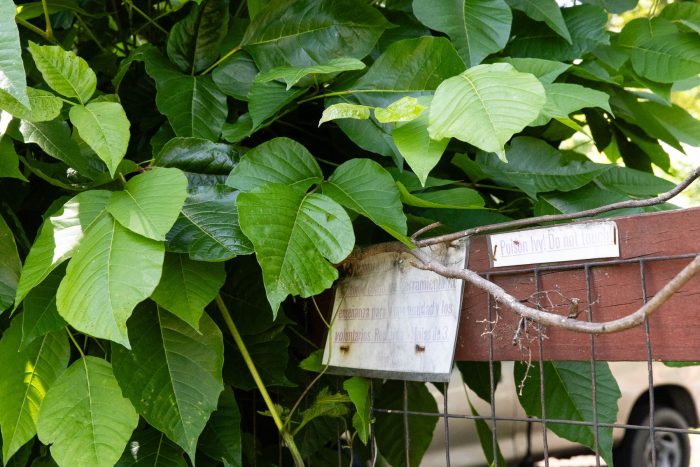Poison Ivy
Toxicodendron radicans
Known by the saying “leaves of three, let it be,” poison ivy can cause red, itchy skin rashes to those who come in contact with it.
This section shows one large critter image at a time. Use the thumbnails that follow to select a specific image to display here.

This gallery contains a grid of small thumbnails. Selecting a thumbnail will change the main image in the preceding section.
Appearance
Poison ivy has 3 compound leaves, each with three leaflets. In the Spring, the leaves are red with green veins down the middle and extending to the edges. In the Summer, poison ivy is bright green. Come fall, leaves change to a mix of red, orange and yellow and finally turn to solid red in the winter.
Predators
Poison ivy uses a chemical irritant (urushiol) to defend itself from its natural predators; primarily beetles, caterpillars, and slugs. Undeterred by this chemical, deer will feast on the plant anyway.
Reproduction and life cycle
In the fall, white berries form on the poison ivy plant and remain throughout the winter. Come spring, untouched berries will fall and disperse their seeds near the parent plant. Berries that are eaten by birds allow for seeds to travel long distances and be dispersed after exiting the bird's digestive system. As a perennial, poison ivy will continue to return, year after year.
Did you know?
- Poison ivy is one of the first plants that change leaf colors in the fall.
- Scientists speculate urushiol evolved as an antimicrobial defense agent, protecting the poison ivy plant against infection–not people.
- Ten to 15 percent of people are immune to poison ivy and will never have a rash.
- Your pets will not get a rash from coming into contact with poison ivy. Don't forget to wash them, though, as urushiol can be carried on fur and transferred to you.
- Poison ivy belongs to the same plant family, Anacardiaceae, as mangos and cashews.
